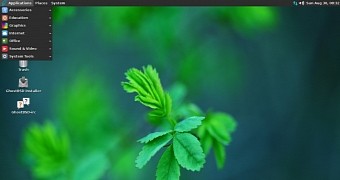The developers of the GhostBSD operating system announced today the immediate availability for download of GhostBSD 11.1, a release that introduces important new features and many improvements.
More than a year in development, GhostBSD 11.1 is based on FreeBSD 11.1 and comes with Xfce and MATE flavors both available for 64-bit (amd64) systems as 32-bit (i386) support is being dropped starting with this release. This is also the first release of the BSD-based OS to ship with its own software package repository.
"After a year of development, testing, debugging and working on our software package repository, we are pleased to announce the release of GhostBSD 11.1 is now available," reads today's announcement. "With 11.1 we drop 32-bit i386 supports, and we currently maintain our software packages repository for more stability."
Here's what's new in GhostBSD 11.1
Prominent new features of GhostBSD 11.1 include new UFS full disk swap size, mirroring, and GPT/MBR options on the installer, support for VMWare Workstation Guest features, ZFS filesystem configuration, Whisker Menu as default application menu for the Xfce edition, and up-to-date in-house built software.
GhostBSD 11.1 also improves the Xfce sound plugin on the Xfce edition, updates the Station tray icon, correctly fills locale settings and lists ZFS disks in the installer. Moreover, the correct keyboard layout is now chosen for the Xfce installation, and the ZFS installer setup should no longer appear as incomplete.
Last but not least, GhostBSD 11.1 repairs the "GhostBSD Bugs" item in the System Tools menu, which didn't function in previous releases, and updates the installer to delete the partition list when navigating to the previous screen. The shutdown, hibernate and suspend functions now work better on both Xfce and MATE editions.
You can download both GhostBSD 11.1 Xfce and GhostBSD 11.1 MATE 64-bit ISOs right now from our website if you want to install it on your personal computer. Existing users should be able to upgrade to this release using the built-in update system, but they can also perform a fresh install using the ISO images, which can be written to either a USB stick or CD/DVD disc.

 14 DAY TRIAL //
14 DAY TRIAL //